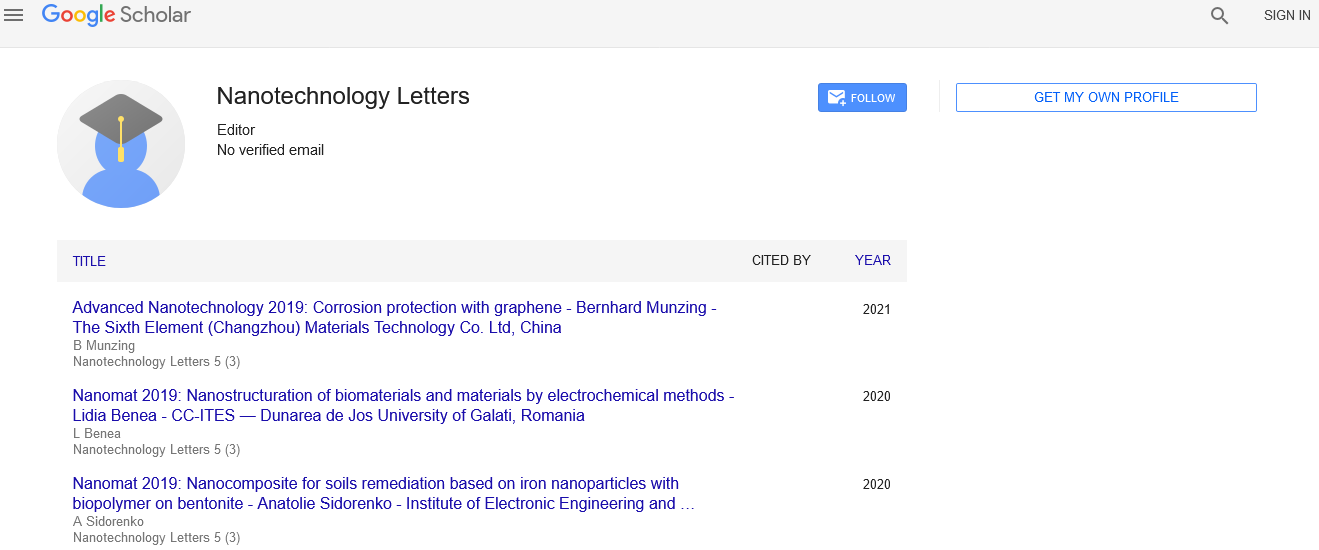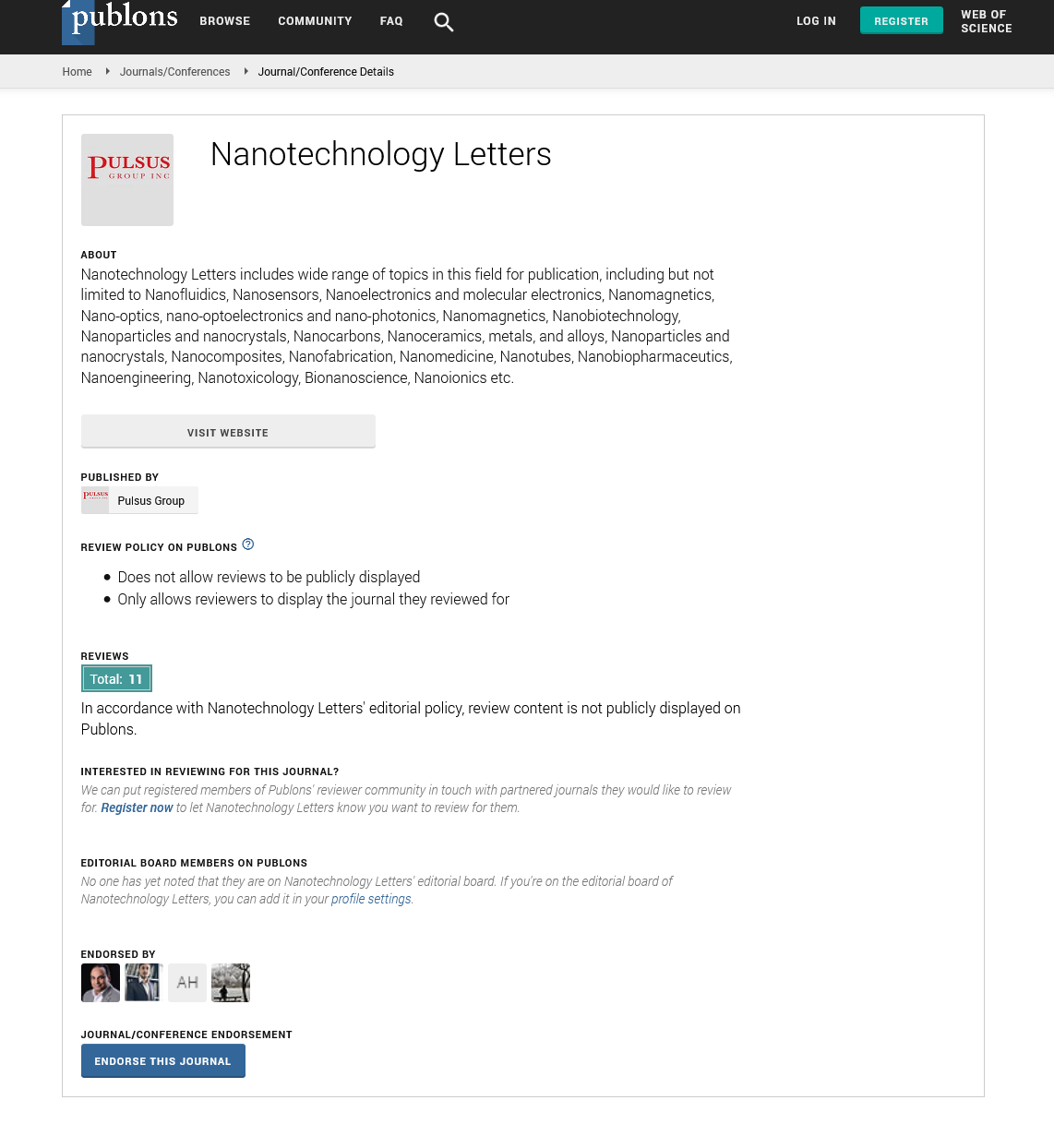
Sign up for email alert when new content gets added: Sign up
Abstract
Smart Materials 2020: Effect of laser parameter, applied loads and sliding distance on friction coefficient of Hybrid Ti6Al4V MMCs - Dr. Onyeka Franklin Ochonogor - University of Johannesburg, South Africa
Author(s): Onyeka Franklin OchonogorTi6Al4V MMCs are advance, smart materials or components that find applications mostly in the aerospace, automobile, marine and biomedical industries. Their outstanding performance in these areas is due to their excellent mechanical properties they posses such as high strength-to-weight ratio and excellent resistance to corrosion degradation. However, due to their low hardness and poor wear property, their applications are restricted to non – friction. The significance of this paper would be to improve on the drawback limiting the application of Ti6Al4V alloy through AM process that involves layer by layer coating modification of surface morphology and mechanical properties of Ti6Al4V thereby fabricating a smart material with improved performance. Additive Manufacturing process has proven to be a reliable fabrication process for smart materials that are capable of reducing emission of CO2 during application that sustainably improves the general working condition of an engineering system. This paper studies the effect of applied loads and sliding distance on the friction coefficient of Ti6Al4V MMCs. Intermetallic hard Boron carbide (BC2) and Boron Nitride (BN) coatings on Ti6Al4V alloy via Additive Manufacturing process. The effects of laser processing parameters and sliding distance on the coefficient of Ti6Al4V MMCs will be investigated. Microstructural evolution will be characterized by scanning electron microscopy spectroscopy (SEM/EDS) and the phases present will also be characterised using X-ray diffractometry (XRD). The wear behaviour in response to variation to load and friction coefficient will be further investigated. The result will give an indication to working condition of an improved hybrid Ti6Al4V MMCs and potentially increase the application range of Ti6Al4V alloy. Titanium and its amalgams have been utilized as embed materials because of their awesome mechanical and erosion obstruction and biocompatibility. The most utilized biomaterial was financially unadulterated titanium (CP-Ti), despite the fact that it has been called attention to that CP-Ti has hindrances of low quality, trouble in cleaning, and poor wear obstruction. In this way, titanium is as yet deficient for high-stress applications, for instance, since a long time ago traversed fixed prostheses and the systems of removable halfway false teeth. Ti-6Al-4V amalgam, initially created as an aeronautical material, has been tried as a swap for CP-Ti, on account of its high mechanical properties with adequate erosion obstruction. Be that as it may, the cytoxicity of natural vanadium is sketchy. Along these lines, a few explores demonstrate that vanadium and aluminium particles discharged from this ternary amalgam can actuate cytotoxic impacts or neurological issue, individually. Additionally, for long haul, this amalgam has moved lacking burden to adjoining bones, bringing about bone resorption and inevitable slackening of the embed. Another ternary vanadium free compound, utilized as embed material, was Ti-6Al-7Nb amalgam that uncovered improved mechanical attributes, erosion opposition, and biocompatibility. Combination was produced for orthopedics application as a fashioned material and has been assessed as another compound for absolute hip prostheses. Niobium displays a comparative impact to vanadium in balancing out stage in the Ti-Nb parallel framework, which is vital for giving the two-stage structure. In this manner, niobium was utilized as the ternary component to deliver the attractive microstructure in the Ti-6Al-7Nb compound. As contrasted and Ti-6Al-4V combination, in an elastic test, Ti-6Al-7Nb compound shows marginally lower quality and about 40% higher lengthening. Moreover, after long haul drenching in 1.0% lactic corrosive, the measure of titanium particle discharged from Ti-6Al-7Nb composite was not as much as that from Ti-6Al-4V amalgam and equivalent to that from CP-Ti. Ti-6Al-7Nb combination indicated marginally lower cast-capacity than that of CP-Ti however less throwing porosity, which is invaluable as far as dependability of castings. In spite of the fact that Ti-6Al-7Nb amalgam castings have been researched for orthopedics application from a few angles, for example, mechanical properties, erosion obstruction, and castability, no investigations have provided details regarding its rubbing and wear opposition, which is a significant factor for absolute hip prostheses material. In this examination, contact and wear attributes of Ti-6Al-7Nb and Ti-6Al-4V compounds were assessed by ball-on-plate and pin-on-circle tribometers as per ISO 7148, ASTM G99-95a, and ASTM G133-95 norms. Tests of the titanium-based composites were inspected utilizing (EDX) examination. The spectra for the general investigation. On account of Ti-6Al-4V composite titanium, Ti top is more articulated than aluminium true to form in the EDX stages. Vanadium, molybdenum (Mo), and nickel are likewise present; for the Ti-6Al-7Nb, the Ti top is more articulated than that of aluminium (Al), niobium (Nb), iron (Fe), molybdenum (Mo), and tantalum (Ta) are additionally present. The concoction creations of the contemplated tests were in consistence with that of a Ti-6Al-7Nb and Ti-6Al-4V, separately. The dependence of Ti-6Al-7Nb and Ti-6Al-4V alloys coefficient of friction (COF) on the mobility distance, that is, the number of cycles of approximately one in the loading and speed conditions. The analysis of these cones allows it to distinguish several periods or successive states of collision and wear. The first period of residence, in which the stiffness of the joint increases rapidly with the body's first reaction, which is iron. The hardness of the metal surface is reduced by plastic deformation. The second period shows a slight decrease in the intensity of the noise. Possibly, the third consecutive body produced by the wrapping of iron plays a role similar to that of a solid lubricant. The third season is defined by the huge increase in the intensity of fiction. The third body is split in two and oxidize and possibly play a major role. The fourth and final time corresponds to the maximum friction height of 1400. Microhardness experiments were performed using a Zwick Roell Z 2.5 micro-compression tester type ZHU/Z 2.5, equipped with a diamond indenter, located in a room temperature of 22°C and atmosphere of laboratory. Using the P-h (load-displacement) curves during microhardness experiments with a loading speed (0.2 mm·min−1), under a maximum load of 50 N, each test was conducted three times, and the average values were calculated automatically by MCT as the load and displacement. The experimental P-h curve of Ti-6Al-7Nb and Ti-6Al-4V.
The wear characteristics of the high-strength Ti-6Al-7Nb and Ti-6Al-4V alloys were evaluated in a uniform wear test for complete hip prosthesis application. The oscillating argument and the physical resistance test were performed in ambient air with an oscillating triboteter in accordance with the standards ISO 7148, ASTM G99-95a, and ASTM G133-95. On the other hand, a conflict of interest test was performed to determine the type of dressing and to reduce the amount of weight loss, on the other hand, to detect differences in the strength of the studied couples under different conditions. The following findings and conclusions were drawn.





